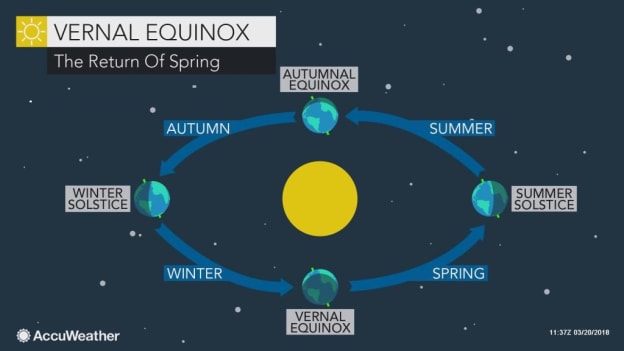What is the Spring Equinox?
If you’re not familiar with the spring equinox, we think you should be. It’s one of the coolest spring holidays out there! This year it occurs on March 20. To be precise, 5:37 AM EDT on March 20.
The spring equinox, also known as the vernal equinox or March equinox, occurs when the sun crosses the celestial equator and starts traveling north. On this day, the sun sits exactly above the equator and the hours of day and night are almost equal throughout the world. In fact, the name equinox comes from the Latin “aequus” meaning equal and “nox” meaning night.
In the Northern Hemisphere, the March equinox signals the arrival of spring. Starting on this day and continuing until the summer solstice, day length increases as the Northern Hemisphere tilts further and further towards the sun.
The World Responds
In the Northern Hemisphere, the spring equinox is tied to all sorts of biological events.
The longer days and warmer temperatures wake up a world that was resting in the winter. You’ll notice color return to flower fields in the spring as plants grow and then bloom. In case you didn’t know, daylength is just as important as temperature when it comes to plant growth.
Animals that spent the winter in hibernation emerge to eat, mate, and breed. Some species of birds that headed south for the winter fly back north for the summer.
People Celebrate the Spring Equinox Around the World
Not only does nature respond to the vernal equinox, but so do people. Different cultures have various ways they celebrate this special day.
The spring equinox marks the first day of the new year on the Iranian calendar. This day is known as Nowruz by people who celebrate. On Nowruz, people gather with their families to eat a special meal, exchange gifts, and wish each other good fortune in the new year.
For Japanese Buddhists, the spring equinox is tied to a holiday called Higan. The equal amounts of night and day serve as a reminder of the presence of good and evil in the world and encourage people to reflect on the six perfections. During the seven days surrounding the spring equinox, people visit graves of their ancestors, practice good deeds, and reflect.
The Mayans also view the spring equinox as an important event. The Pyramid of Kukulcan in Chichen Itza, Mexico displays the significance of this day. During the spring equinox, the sun forms a mix of shadows and light that lead to the image of a snake sliding down the pyramid’s steps. This slithering body connects to a stone head at the temple’s base, leaving no doubt the Mayans constructed this pyramid with the equinox in mind.
In some parts of the world, people attempt to balance an egg on its narrow end. While this is possible on the spring equinox, it’s also possible on other days of the year such as the autumnal equinox, the first day of fall.
Spring Equinox FAQ
What’s the Difference Between the Equinox and Solstice?
During the spring and fall equinox, the length of day and night are close to equal and the sun sits over the equator. The solstices represent polar extremes. The summer solstice marks the longest day and the winter solstice signals the longest night.
What Happens During the Vernal Equinox?
During the spring equinox, the sun passes directly over the celestial equator as it travels north. On this day, both the Southern Hemisphere and Northern Hemisphere receive an equal amount of light, and the length of day and night are almost equal everywhere on Earth.
Why is the Spring Equinox Important?
The spring equinox signals the changing of the seasons! In the Northern Hemisphere, days become longer and temperatures increase. And Earth’s residents respond to these astrological and meteorological changes. Flowers start blooming, trees develop leaf buds, and animals come out of hibernation.



